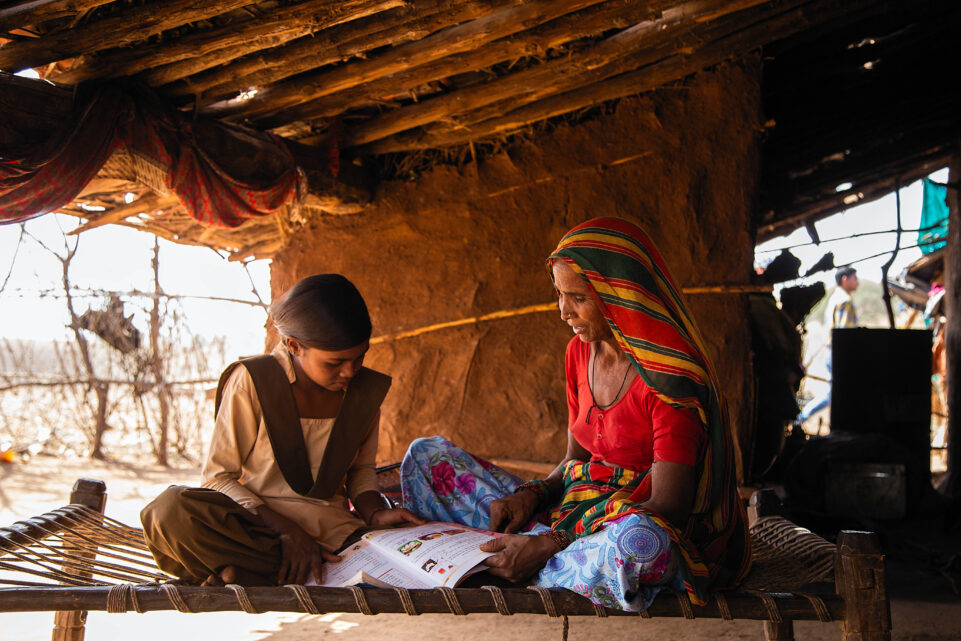Education Fund
Breadcrumb Start – DO NOT EDIT THIS SECTION
Breadcrumb End – DO NOT EDIT THIS SECTION
The Education Fund is ideal for donors who want to focus their giving on educational opportunities for children and adolescents who live in extreme poverty. Charities in this fund work to increase access to and participation in education, while promoting literacy, numeracy, and life skills that create self-sufficiency and improve overall well-being, future earnings, and health outcomes. Due to gender disparities, the Education Fund places emphasis on the compounding benefits of matriculating girls.
Donations above $2 tax-deductible. See our global tax-deductibility options here.
By Card or Paypal
By Bank Transfer, Cheque, Crypto, etc.
Key Strengths: Scale, Depth of impact, Durability
Multidimensional Poverty Index Indicators: School attendance, Years of schooling
Other Key Outcomes: Improved learning outcomes, Reduced early pregnancy rates, Reduced early marriage rates
Why donate to the Education Fund?
Over 244 million children globally were estimated to be out of school in 2021. This is unacceptable when we know education can fundamentally change the trajectory of individuals and communities. Additionally, despite efforts to increase access to education, many students in low-income countries around the world continue to struggle with fundamental reading and math skills. This can have long-term consequences, making it difficult for students to access higher education and gainful employment, and ultimately limit opportunities for economic and social mobility.
Out of school rates are disproportionately higher in sub-Saharan Africa and South Asia, particularly for adolescent girls. In many poor countries, adolescence can be a particularly dangerous time for girls, as they are at higher risk of child marriage, teenage pregnancy, sexual violence, malnutrition, and exposure to HIV/AIDS. Schooling is a strong deterrent to all of these risks, making access to education critical. Research has also shown that providing education for adolescent girls can strengthen girls’ agency and participation in their communities and empower them to make leadership decisions both within and outside the household.
Average learning-adjusted years of schooling, 2020
Learning-adjusted years of schooling merge the quantity and quality of education into one metric, accounting for the fact that similar durations of schooling can yield different learning outcomes.

Data source: Filmer et al. (2018) via World Bank – OurWorldInData.org/global-education | CC BY
What is the intended impact of the Education Fund?
- Increasing learning access, which can increase future employment options and promote children’s well-being by providing them with safe spaces to learn, grow, and flourish.
- Improving learning outcomes, which can lead to better academic performance, higher graduation rates, and increased economic opportunities.
- Ensuring equitable access to education for girls, which can help to break the cycle of poverty and promote gender equality.

How do we measure impact?
Our research team works closely with our recommended nonprofits, actively monitoring their progress on key outcomes. These outcomes focus on educational dimension and indicators of the Multidimensional Poverty Index, measuring years of schooling and school attendance among children. We also monitor increases in learning scores as a result of the work of the organizations in this fund. We explore the sources of impact metrics, ranging from internal monitoring and evaluation data, to external impact evaluations, including randomized controlled trials. In evaluating the impact of our recommended charities and projecting their future potential, we analyze the convergence of evidence from diverse sources, including external evaluations and the broader literature on specific interventions. Additionally, we assess the impact of our grants and their ability to strengthen the ecosystem of high-impact organizations. Key questions are central to these evaluations, such as:
- Do our grants effectively realize their intended objectives?
- Are our recommended nonprofits making tangible progress towards their goals on an annual basis?
- Are these organizations able to secure additional funding and expand the reach of their programs?
The successful scaling and increased financial backing of our recommended charities serve as indicators of achievement for our team.
Read more about how we measure impact
To learn more about our research and evaluation process, please refer to the following links:
How does the Education Fund work?
Through rigorous research and strategic allocation, we make discretionary grants at the end of each quarter. Our decisions are guided by direct conversations with these organizations, the fund’s balance, and a focus on programs aligned with our research and strategy.
By contributing to the fund, you entrust a team of expert grant-makers to maximize the effectiveness of your donation. Your support powers a portfolio of high-impact organizations and promising solutions while addressing time-sensitive funding gaps that individual donors might not be able to fill.
Funds are distributed quarterly, ensuring that every donation is put to work without delay. You can choose to allocate 100% of your donation to charities or dedicate 90% to charities and 10% to support our operations. We offer this option because we do not charge donor fees and instead raise operational funding separately.
Latest Grants Made
| Date | Recipient | Grant | Amount |
|---|---|---|---|
| December 2024 | Teaching at the Right Level Africa | Supporting operating expenses | AUD 13,982.58 |
| December 2024 | Educate Girls | Supporting operating expenses | AUD 34,944.59 |
Fund Manager
Our team works to recommend high-impact donations. Contact us if you would like to know more about the Education Fund.

